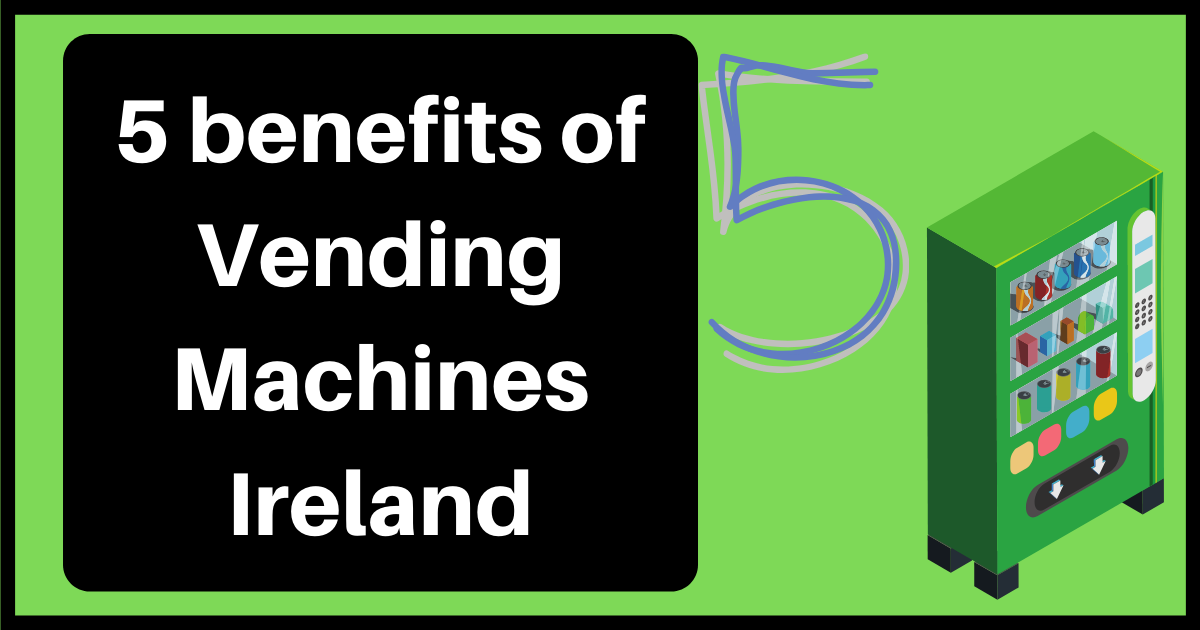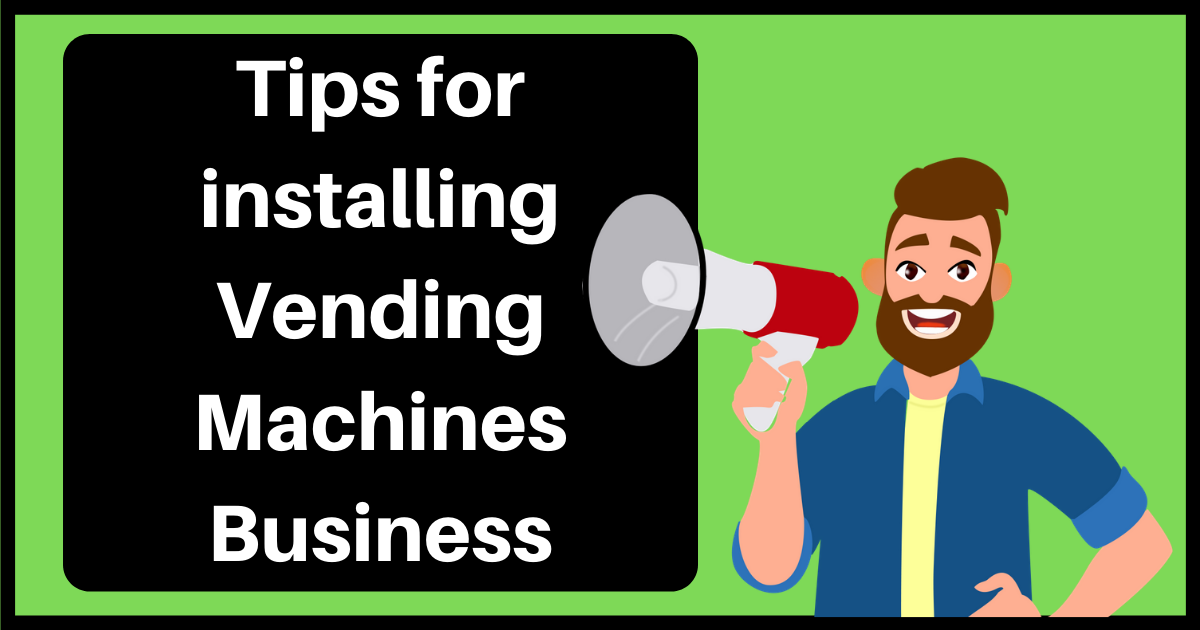21 sales prospecting tips for vending services in Ireland
A comprehensive list of considerations for vending services in Ireland.

Image courtesy of iStock.
Article courtesy of Vending Times
With customer locations reopening after the COVID-19 lockdowns, sales teams are swinging back into action. Hence, now is a good time to review 21 useful tips offered by a team of professionals who have been selling convenience services for more than 20 years.
1. Maintain a clean prospect Excel sheet or CRM to achieve vending services in Ireland.
Without a well-maintained prospect spreadsheet, there is no way to organize a productive day of prospecting. If you don’t know who your prospects are, how do you expect to nurture them and build brand recognition with them? If you don’t have a CRM, work on getting one, and use Excel for the time being.
2. Take great notes on all prospect conversations.
You may have a great memory, but why would you crowd your brain up with information from hundreds of conversations or rely on it, for that matter? Reflect on the interaction and enter all relevant information they relayed to you. Before your next call or email, revisit your notes to be precise and show you were listening.
3. Quality prospect lists yield better results.
While purchasing a third-party list might be appealing cost-wise and a time-saver, the data will be outdated and require hours of thorough qualification work to update. Be prepared to invest in a quality list – the growth of your business relies on it. As a result of the dynamic workplace adjustments of 2020 (and to this day), it is important to confirm on-site staff sizes, location and decision-maker(s). Whether your team organically builds it in-house, purchase a list or have it vetted by a skilled call team; better data yields better results.
4. Concisely state the purpose of your call upfront.
If the gatekeeper understands why you’re calling, they may be able to help! Randomly firing questions may not result in the best start to a conversation. State the reason for your call and one advantage to the company, and then ask fact-finding questions.
5. Ask qualifying questions and build rapport before getting to the decision maker.
Gather as much qualifying information and anecdotal details as possible from the gatekeeper. This will make for a warmer and productive conversation with the decision maker. Warm calling is always more productive than cold calling. Do your due diligence to show you researched your prospect, even if that research was as simple as asking the receptionist two questions. On-site staff size (to be sure they meet a minimum standard) and decision maker name are the two more important qualifying questions for the vending services in Ireland.
6. Take a couple extra minutes in preparation before your more difficult calls.
Perhaps the gatekeeper has blocked several attempts to reach the decision maker, or you’ve received summary dismissals from someone other than the decision maker. Maybe you’re consistently getting sent to voicemail. Combat this by researching the company website, LinkedIn or Google Search to find any piece of useful information, such as an alternate phone number, an alternate contact, email address, the company in the news, or an article published from your contact. How can you make the cold call warmer to get different results? This specifically relates to those companies with a 300-person or more staff size, where winning those micro market deals present a more significant revenue opportunity.
7. Listening to the prospect is the key to success.
Make the prospect feel like they are the only person you’ve called that day. Listen closely to the prospect and let them do most of the talking. Use their answers to your questions to tailor your approach and cater the call to what they need. Natural conversation and active listening leads to more pain points being discovered, which will result in more quality sales opportunities.
8. If you don’t ask for the appointment or the sale, you won’t get it.
Prospects can’t read your mind and will rarely jump in your lap with “I’m ready to buy,” so be clear about your intentions. Be direct about what you’re proposing.
9. Be prepared, but don’t sound like you’re reading from a script.
It is important to know your material and plan your conversation in advance of making the call. However, don’t come off as robotic by reading right off your notes. Practice the general flow of your conversation so that it sounds more natural. Know the concept of your rebuttals.
10. Be positive, friendly, and mirror your prospect.
Be enthusiastic and approachable on your calls. Adjust your tone to mirror the prospect. Use vocal variety to be interesting to talk with and to show your own interest in what vending solutions you’re offering. Bring your own personal touch to every single prospect engagement you have. How can you expect to break through the noise if you sound and act like every other salesperson in your field?
11. Be the authentic you. Sell them like you’d sell to your mother.
As most sales professionals would agree, people buy from those they like and trust. In order to be trusted, be transparent and come from a place of integrity. Have the prospect’s best interest at heart.
12. Each call is an opportunity to gather more information.
Never waste an outbound call. There is always something productive that can be done. Use each call to gather some useful piece of information. This could be something as simple as confirmation on the prospect’s on-site staff size, a prospect’s pain point about product that gets stuck in the machine too often and the time associated with dealing with that, or just the lackluster variety of product. Other details, such as the prospect is going on vacation next week, can make a difference in your conversation. Add it to your notes and set yourself up for a warmer call on your follow-up.
13. Continue to train salespeople with updated material.
No role play, script, presentation or template is perfect. There is always room for improvement, and judging by the changes experienced this past year, edits should be made continuously. Continuously update your product selling points, especially regarding technological advancements, to stay ahead of your competitors.
14. Don’t give up too quickly.
Rarely is a prospect reached on the first dial… or the third! Some may require more touchpoints or conversations than others to convert to an appointment. Try to read the prospect’s responses. “Not interested” might just mean the prospect is short on time or in a rush. “Not interested” is often “not interested for now,” not never. Know when to move on, but also consider the circumstances that may warrant a quick “not interested” response.
15. Don’t focus on a small subset of prospects kicking the can that may consume your time.
Though we know it takes multiple outreaches to have meaningful conversations, you don’t want to get mired down in prospects that never seem able to make decisions to move forward. An email nurture program or direct mail fits in perfectly in between the more occasional phone calls for these types. At some point, hold these “I want to do something but…not yet” prospects accountable by asking a powerful question such as, “We’ve been going back and forth for a while now, and you clearly have concerns in moving forward. I would love to hear what those concerns are.” Save this question for a phone call since an email of this nature may get ignored.
16. Integrate your marketing with several different techniques.
Marketing requires a budget, not a “hope and pray this one thing works” approach. That budget should be made up of several techniques to nurture prospects, build brand awareness and actively pursue your best prospects by phone. Consider all the marketing techniques available to you and draw up a 6-month plan twice a year, then go after it. Give it due time to produce results and measure the success. At the very least, engage a regular soft-touch email newsletter once a month for all your prospects in between phone calls, and perhaps a more strategic “mushy mail” program for your top 25 every quarter.
17. Be dogged in your follow-up.
Do you have a short list of callbacks for vending services in Ireland that aren’t getting any love? If the prospect told you “not now, call me in two months,” then be on top of it in two months. If the current vendor is on thin ice as a result of poor service quality, strategically reach out to be in the right place at the right time when the prospect begins to think about a replacement. The most successful salespeople have a methodical and effective follow-up system.
18. Expect the prospect to object at least once.
Almost every sale ever made requires the ability to handle one objection or more. Make a list of the most common objections and prepare scripted rebuttals. There are only about 10. Rehearse your rebuttals so that you come across as knowledgeable and confident. Continue to add to the list of objections as new ones arise and enhance your rebuttals with new strategies.
19. Be innovative and adaptive in relation to vending services in Ireland
As we all learned in 2020, change can happen with a flip of a switch. Our old normal was turned on its face as we morphed into a “new normal.” Be agile and willing to change your sales strategy to improve your company’s longevity.
20. What sales opportunities exist within your current client base?
Which clients do you need to make a phone call to that haven’t heard from you in a while? Are there opportunities to remind the client that only wanted vending a year ago that your micro market solution may be the perfect fit now? Which clients don’t also utilize your company for coffee that should? Start by exporting a list of all your clients. Then, insert a column in the spreadsheet of your top 25 that should get a phone call over the next two weeks.
21. Align sales and marketing strategies for vending services in Ireland
Just like Yin and Yang complete each other, sales and marketing do. Where one gives, the other takes. Marketing gathers quality leads and sales converts those opportunities. It’s important to align both department’s strategies and resources to yield the best results.



